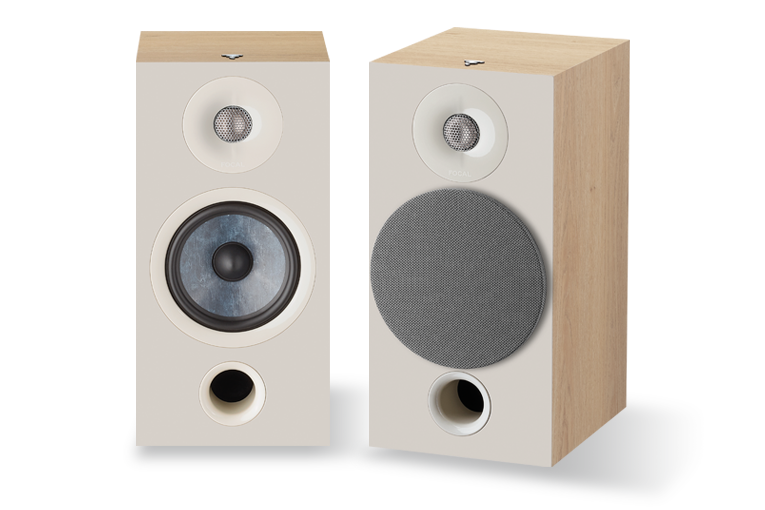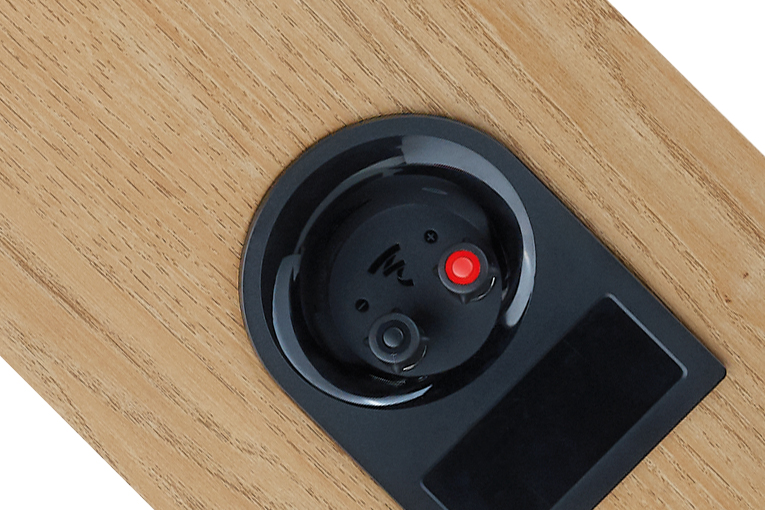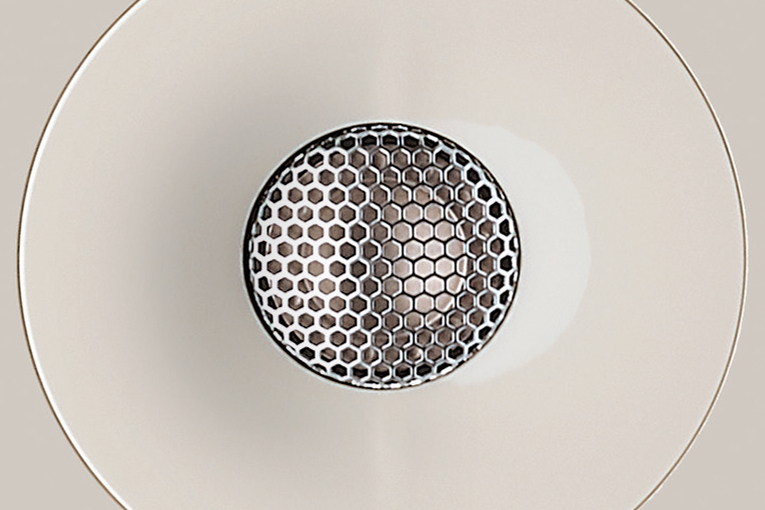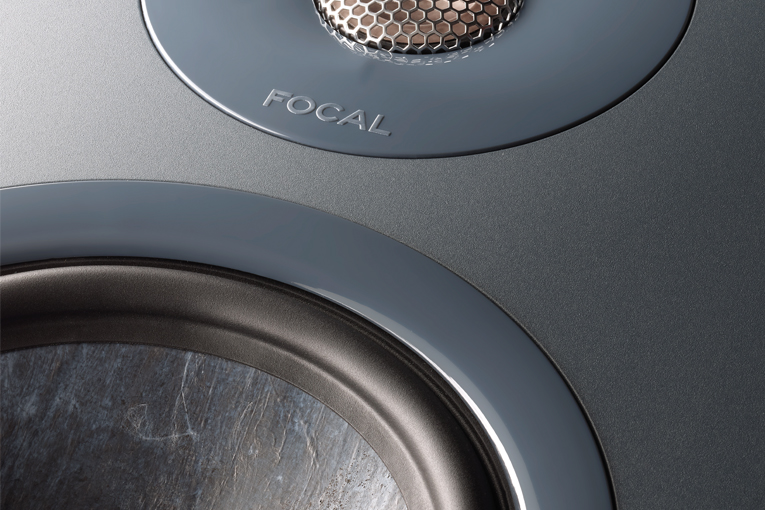 In August 2019, we reviewed Revel’s PerformaBe M126Be minimonitor ($4000/pair, all prices USD). Two months later, we recognized it as a Recommended Reference Component, and in December we made it one of our 2019 Products of the Year. In fact, the PerformaBe M126Be’s sound is so neutral and transparent that we’ve found it provides an ideal benchmark against which to gauge the sound qualities of other stand-mounted loudspeakers. So last month, when Diego Estan reviewed for SoundStage! Access the Focal Chora 806 loudspeaker and found that, for $990/pair, it came close to matching the M126Be’s sound in some respects and exceeded it in others, we knew this French minimonitor was something special.
In August 2019, we reviewed Revel’s PerformaBe M126Be minimonitor ($4000/pair, all prices USD). Two months later, we recognized it as a Recommended Reference Component, and in December we made it one of our 2019 Products of the Year. In fact, the PerformaBe M126Be’s sound is so neutral and transparent that we’ve found it provides an ideal benchmark against which to gauge the sound qualities of other stand-mounted loudspeakers. So last month, when Diego Estan reviewed for SoundStage! Access the Focal Chora 806 loudspeaker and found that, for $990/pair, it came close to matching the M126Be’s sound in some respects and exceeded it in others, we knew this French minimonitor was something special.
In certain ways, the Chora 806 is conventional: a two-way speaker with a tweeter, a midrange-woofer, and a port, all on the front baffle of a rectilinear cabinet. But in other ways, it’s distinctive; it’s made in France by Focal from bespoke parts, and is available in bold-looking finishes: Light Wood or Dark Wood, each of these a faux wood veneer on all sides except the plastic baffle, colored, respectively, a high-gloss beige or bluish-gray; and Black, which combines a gloss-black baffle with matte-black sides.

The Chora 806’s 1” tweeter has an inverted dome made of aluminum and magnesium, driven by a robust motor comprising a 20mm neodymium magnet and a 20mm voice-coil with an aluminum former. Surrounding the tweeter on the front baffle is a shallow waveguide with interesting-looking ridges directly above and below the dome. The blue cone of the 6.5” midrange-woofer is made of nonwoven fibers of recycled carbon and a thermoplastic polymer Focal calls Slatefiber, which they say took them four years to develop; it’s used in the Chora models for the first time.
The Chora 806’s technical performance was revealed by our measurements of it, taken in the anechoic chamber of Canada’s National Research Council. The speaker’s various frequency-response charts show it to be reasonably neutral throughout the audioband, with commendably low distortion; and its sensitivity and impedance indicate that it should be easy for most amplifiers to drive. In fact, Diego drove the pair of them with an NAD C 316BEE integrated amplifier ($449) specified to output only 40Wpc into 8 ohms.

Playing “Creep,” from the Stone Temple Pilots’ Thank You (16-bit/44.1kHz FLAC, Atlantic), Diego heard cymbals that “shimmered naturally with no hint of glare or metallic sheen,” a drum kit that “sounded full, tight, satisfyingly rich and real,” and a midrange that was “pure delight -- lots of detail, with that full-bodied, forward, lively sound I’ve come to expect from and enjoy with Focal speakers.” He also found that Scott Weiland’s voice “seemed to leap from the mix, to the point where I felt I could reach out and touch the aural image conjured dead center between and above the speakers, and slightly behind the plane described by their frontmost vertical edges.”
Diego then played “I’ve Got to See You Again,” from Norah Jones’s Come Away with Me (16/44.1 FLAC, Blue Note). “The Chora 806es didn’t disappoint -- from Jones’s opening acoustic-piano notes at center, and Jenny Scheinman’s delicate violin just behind and to the left, these speakers were effortlessly transparent. The piano had rich tonality and weight, with all its subtle resonances conveyed, while the violin notes had a deliciously smooth texture with no hint of edge or glare. Jones’s voice was, as with the other tracks, forward yet smooth, lively yet full-bodied, gently floating above the tops of the speakers.” Listening to the acoustic guitar in this track also helped Diego to determine that “the 806es struck the right treble balance: not too hot, not too cold, with delicacy and detail intact.”

Diego first compared the Focal Chora 806es with his pair of Bowers & Wilkins 685 S1s (discontinued, $600/pair when available), but that comparison didn’t last long: “There was no contest -- with every track I played, the Chora 806 bested the 685 S1.”
He then pitted the Chora 806es against Revel’s PerformaBe M126Be’s. He heard “a hint of cabinet coloration from the Focals that just wasn’t there with the Revels.” Playing “Sad Nights,” from Blue Rodeo’s The Days in Between (16/44.1 FLAC, WEA), he also found that acoustic guitars “float[ed] freer of the Revels’ cabinets, and were more clearly delineated from the bass lines than through the Focals. The pricier Revels’ thicker, denser cabinets and no doubt superior drivers also yielded tighter, punchier bass than the Focals could deliver.”
Diego had more or less expected that, given the difference in price. What he hadn’t expected was what he heard when he focused on Blue Rodeo’s voices in this track: “The Chora 806es had the ability to lift [Jim] Cuddy’s voice up, out, and away from the rest of the instruments, in a way that the Revels couldn’t quite replicate. This effect was more pronounced in the chorus, this time with [Greg] Keelor’s backing vocal. The Revels reproduced both singers’ voices with realism and transparency, but the two men sounded somewhat trapped in the mix when directly compared with the Focals -- through the latter, Cuddy and Keelor sounded freer.”

When Diego then relistened to Norah Jones’s “I’ve Got to See You Again,” he “only marginally preferred the Focals -- her voice had a touch more body and presence, which I liked.” But prefer the Focals he nonetheless did -- quite a statement, considering that the Revels cost more than four times as much. Diego did concede that with this track the Revels “produced noticeably tighter bass, a bit more transparency of piano and voices, and just a hair more finesse and delicacy with cymbals.” Still, here’s how he ended his “Comparisons” section: “What was surprising was how well the Focals not only held their own, but from time to time won me over -- for one-fourth the Revels’ price.”
The first sentence of the final paragraph of Diego’s “Conclusion” well sums up this French loudspeaker: “For a stand-mounted speaker costing $990/pair, Focal’s Chora 806 did little wrong and so many things right.” Those things it did right, and its respectable measurements, helped the Chora 806 earn a Reviewers’ Choice award when Diego’s review was published. This month, they helped it earn a spot on our list of Recommended Reference Components.
Manufacturer contact information:
Focal-JMlab
108 Rue de l’Avenir
42350 La Talaudière
France
Website: www.focal.com






















